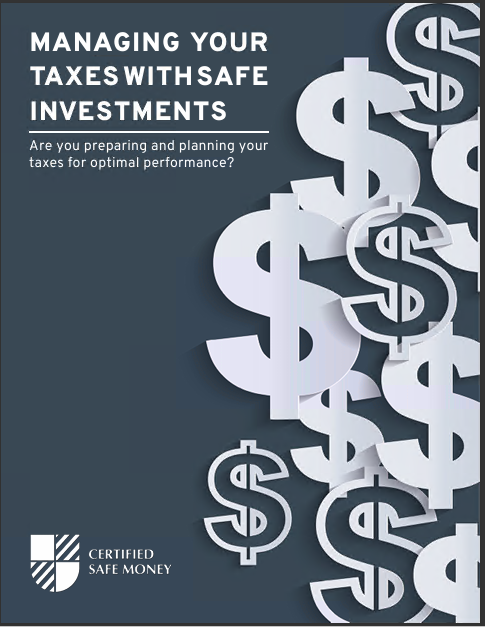Key Takeaways
-
Fixed index annuities in 2025 offer the dual advantage of growth potential tied to market indexes and a reliable foundation of principal protection.
-
These products are designed for long-term retirement planning, making them especially relevant for those seeking balance between security and opportunity.
Exploring Today’s Investment Climate
In 2025, market volatility continues to shape how investors think about their financial futures. Rising interest rates in 2024 created new opportunities for fixed-income products, and while rates have moderated this year, many still look for instruments that provide both growth and safety. This is where fixed index annuities (FIAs) stand out. They combine elements of fixed annuities and market exposure, offering the chance for higher returns without putting your principal at risk.
What Makes Fixed Index Annuities Different
Unlike traditional fixed annuities, which provide a guaranteed interest rate, FIAs credit interest based on the performance of a chosen market index, such as the S&P 500. However, they do not invest your money directly in the market. Instead, they use a formula that applies a participation rate, cap, or spread to determine credited interest. This design ensures that your funds remain protected from market downturns while still allowing for potential upside.
Key features include:
-
Principal Protection: Your initial investment remains safe from market losses.
-
Market-Linked Growth: Earnings are tied to index performance, offering higher potential than fixed-rate annuities.
-
Tax Deferral: Earnings accumulate tax-deferred until you take withdrawals.
-
Optional Income Riders: Many contracts allow you to add lifetime income benefits for long-term security.
Understanding the Growth Mechanism
When you choose a fixed index annuity, your credited interest depends on index performance, but with limits. These limits are designed to balance risk and reward:
-
Participation Rate: The percentage of index gains that are credited to your account.
-
Cap Rate: The maximum percentage of index gains you can earn in a given period.
-
Spread or Margin: A portion subtracted from the index return before interest is credited.
For example, if the index grows 10% and your annuity has an 80% participation rate, you would receive 8% interest credit for that period. If a cap rate applies, such as 6%, your credited interest would be limited to that maximum.
The Role of Time in FIAs
Fixed index annuities are long-term commitments. Most contracts come with surrender periods that last anywhere from 7 to 12 years. During this time, withdrawals above the free-withdrawal allowance can incur penalties. This structure is intentional—it allows the annuity provider to invest and manage funds effectively while offering you guarantees.
You should think carefully about timelines. FIAs are best suited for retirement planning when you have at least a decade before needing to access the funds. Short-term needs should be addressed through more liquid investments.
How FIAs Fit Into Retirement Portfolios
FIAs can act as the safe middle ground between conservative and aggressive investments. They are particularly valuable in retirement planning for:
-
Income Stability: With optional riders, FIAs can provide a predictable income stream in retirement.
-
Diversification: They reduce reliance on equities while still offering some growth linked to market performance.
-
Inflation Hedge Potential: Though not direct hedges, their growth feature helps offset inflation better than traditional fixed annuities.
-
Principal Preservation: Protecting your savings during market downturns is critical for those near or in retirement.
Comparing FIAs to Other Safe Investments
In 2025, investors continue to evaluate FIAs alongside other safe investments such as:
-
Traditional Fixed Annuities: Offer guaranteed returns but without growth potential.
-
Certificates of Deposit (CDs): Provide guaranteed returns for shorter terms but often at lower rates than FIAs.
-
Treasury Securities: Offer high safety but limited growth, especially if inflation rises.
-
Money Market Accounts: Provide liquidity and safety but typically yield lower returns.
FIAs provide a balance these other options lack. They let you capture partial market gains while maintaining principal protection—something neither CDs nor equities alone can offer.
Risks and Limitations to Consider
While FIAs offer compelling benefits, you should also understand their limitations:
-
Liquidity Restrictions: Surrender charges apply if you withdraw beyond allowed limits during the surrender period.
-
Complexity: Caps, spreads, and participation rates can make them harder to understand than traditional fixed products.
-
Potential Lower Returns: Compared to direct equity investments, FIAs limit your upside in exchange for safety.
-
Fees: Optional riders that guarantee lifetime income often come with additional annual fees.
Being aware of these factors ensures that you enter such contracts with clear expectations.
Evaluating Market Conditions in 2025
In the current economic environment, FIAs are attracting attention due to moderate interest rates and ongoing market uncertainty. Investors are increasingly focused on preserving wealth while still keeping pace with inflation. FIAs allow for strategic participation in market growth without exposing retirement funds to sudden downturns like those seen in 2022 and 2023.
Looking ahead, if interest rates stabilize or decline further, FIAs may remain attractive due to their relative safety and growth-linked potential. For retirees, the peace of mind of not losing principal outweighs the trade-off of capped returns.
Who Should Consider FIAs in 2025
FIAs may be a good fit if you are:
-
Within 10 to 15 years of retirement and want to secure your nest egg.
-
Looking for a balance between growth and safety in uncertain markets.
-
Interested in guaranteed income streams during retirement through optional riders.
-
Concerned about market downturns but still want growth opportunities.
If you fall into these categories, FIAs could serve as a cornerstone in your long-term financial strategy.
Practical Steps Before Buying an FIA
Before committing to a fixed index annuity, you should:
-
Define Your Goals: Decide whether you prioritize income, growth, or preservation.
-
Assess Your Timeline: Confirm you will not need significant access to funds during the surrender period.
-
Understand the Terms: Review participation rates, caps, spreads, and surrender charges carefully.
-
Evaluate Optional Riders: Determine if lifetime income or other features align with your goals.
-
Consult a Licensed Financial Professional: Personalized guidance is essential given the complexity of FIAs.
Making the Most of FIAs
Incorporating FIAs into your retirement plan requires careful alignment with your broader financial strategy. They are not intended to replace growth investments like stocks but to complement them. By dedicating a portion of your portfolio to FIAs, you balance stability with potential growth. The result is a retirement plan that can weather volatility while providing reliable income options.
Building a Secure Retirement with Confidence
Fixed index annuities in 2025 remain one of the most versatile tools for those seeking both growth potential and reliable protection. They allow you to benefit from positive market trends while ensuring that downturns do not jeopardize your hard-earned savings. As with any investment decision, the key lies in understanding your options fully and seeking guidance when needed.
If you are considering whether an FIA is right for you, reach out to a licensed financial professional listed on this website. They can help you tailor these products to your unique goals and timeline.












